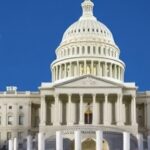SAN FRANCISCO, USA – In a poignant tale of the American Dream turning sour, Rajesh and Priya Sharma, a non-resident Indian (NRI) couple, have packed up their Silicon Valley home of 17 years and returned to India, driven out by Healthcare costs that devoured their life savings. Despite thriving careers in tech and deep-rooted family ties—including two US-born children—the Sharmas cited a staggering $250,000 hospital bill as the final straw in their decision to relocate.
The couple’s departure underscores a growing crisis at the intersection of immigration, NRI experiences, and the United States‘ notoriously expensive healthcare system, where average family premiums topped $23,000 in 2023, according to Kaiser Family Foundation data.
Sharmas’ Silicon Valley Success Story Hits Rock Bottom
Rajesh Sharma, 48, arrived in the United States in 2006 on an H-1B visa, quickly climbing the ranks at a major tech firm in California’s Bay Area. His wife, Priya, 46, followed soon after, building a career in software engineering. Together, they purchased a home in Sunnyvale, raised two daughters—now teenagers—and became pillars of the local Indian diaspora community.
“We loved everything about America—the opportunities, the innovation, the diversity,” Rajesh told reporters via video call from Mumbai last week. “But one health scare changed it all. We were one emergency away from bankruptcy.”
Their story began unraveling two years ago when Priya was diagnosed with a chronic condition requiring ongoing treatment. What started as routine check-ups ballooned into a nightmare of co-pays, deductibles, and out-of-pocket expenses. Despite employer-sponsored insurance, the couple faced annual costs exceeding $15,000, far outpacing their Indian counterparts where similar care might cost a fraction.
By 2023, the Sharmas had sunk over $100,000 into medical bills. The tipping point came last summer: Priya’s emergency surgery resulted in a $250,000 invoice, with insurance covering only 60%. “We remortgaged our house and maxed out credit cards,” Priya shared. “Our daughters’ college funds were at risk. We had no choice but to leave.”
Exploding $250K Bill Exposes US Healthcare’s Hidden Traps for Immigrants
The Sharmas’ ordeal is a stark illustration of America’s healthcare pricing opacity. A 2023 study by the Health Care Cost Institute revealed that hospital bills for immigrants often spike due to limited networks and surprise billing. For NRIs on work visas, the lack of universal coverage amplifies vulnerabilities.
- Average US family health premium: $23,968 (up 7% from 2022)
- Out-of-pocket maximums: Up to $9,450 for individuals
- Comparison to India: Comprehensive family health insurance under ₹20,000 annually ($240)
Experts like Dr. Meera Patel, a healthcare economist at Stanford University, note that NRIs face unique pressures. “Many H-1B holders delay green cards due to costs, remaining in limbo without Medicare eligibility,” she explained. “A single illness can wipe out decades of savings.”
In the Sharmas’ case, the bill itemized $50,000 for a three-day ICU stay—charges that pale in comparison to India’s $5,000 equivalent, per Apollo Hospitals data. Priya recounted negotiating down the bill by 20%, but it wasn’t enough. “We felt trapped,” she said. “Back home, we have family support and affordable care.”
NRI Relocation Wave Fueled by Healthcare and Economic Pressures
The Sharmas are not alone. Data from India’s Ministry of External Affairs shows a 15% uptick in returning NRIs from the United States since 2020, with Healthcare costs cited in 28% of surveys by the National Association of Software and Service Companies (NASSCOM).
Immigration patterns are shifting: While H-1B visas hit record highs in 2023 (188,400 approvals), green card backlogs for Indians stretch 50+ years. Coupled with post-COVID inflation and remote work booms, many NRIs are opting for relocation to India.
- 2022-2023: 75,000 NRIs returned from US, per Indian consulate figures
- Tech sector impact: 40% of returnees were IT professionals like the Sharmas
- India’s pull factors: Lower living costs (30-50% less), booming job market (8.5% GDP growth forecast)
Similar stories abound. Last month, Bengaluru-based firm Infosys welcomed back 500 former US employees, offering repatriation packages. “Healthcare costs are the silent killer of the NRI dream,” said immigration attorney Vikram Singh. “Clients tell me it’s cheaper to fly home for treatment than pay US rates.”
The Sharmas sold their home for $1.8 million, relocating to Pune where they’ve bought a spacious villa for $300,000. Rajesh now consults remotely for his US firm, earning 80% of his salary while slashing expenses by 60%.
Policy Shifts and Expert Warnings Signal Tough Road Ahead for US Immigration
As NRI relocation accelerates, policymakers are taking note. US Senator Bernie Sanders recently lambasted the system, calling for price transparency laws. Yet, with the 2024 election looming, comprehensive reform remains elusive.
Immigration advocates predict ripple effects. “If high-skilled NRIs like the Sharmas leave en masse, it hurts innovation,” warned Brookings Institution fellow Aarav Khan. Projections estimate a $50 billion annual GDP hit if trends continue.
For the Sharmas, the future is bittersweet. Their daughters, now on student visas, plan to join them post-graduation. “America gave us so much, but we can’t afford to stay,” Rajesh reflected. Priya added, “India feels like home again—with healthcare we can actually afford.”
Looking ahead, NRIs contemplating United States immigration are advised to factor in healthcare simulations. Tools like Healthcare Bluebook and expat forums buzz with warnings. As one Reddit thread titled ‘NRI Exit Stories’ garners 10,000 views, the message is clear: Weigh the dream against the dollars.
This saga highlights urgent needs for affordable care and streamlined visas, lest the US lose its edge in attracting global talent. Families like the Sharmas remind us that behind every statistic is a human cost—and a potential reversal of fortunes.









